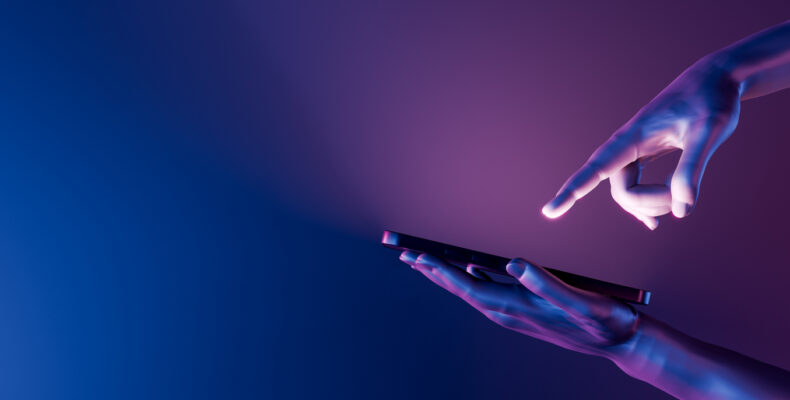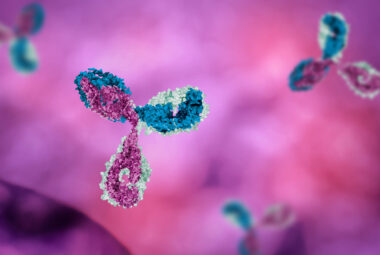
Are smartphones about to get smarter? With terahertz spectroscopy, it certainly looks that way…
The number of UK smartphones users reached 55.5 million in 2021. This means that nearly 83% of the population have access to Mobile Applications, more commonly known as Apps. Today, almost 3.3 million Apps are available on Google Play, with approximately 2.2 million Apps listed on the Apple Inc. App Store. One area of this App explosion is a soaring demand for health Apps, with the worldwide digital health market forecast to be worth £1311 bn by 2030.
Clearly the increasing functionality of smartphones has significantly developed in fields such as artificial intelligence (AI); location-based technologies; augmented reality; wearable technology; mobile payments, and biometrics. Smartphones, now routinely used in ways that were unforeseen a few years ago, are displacing many devices and disrupting markets. As smartphones have advanced, increasingly sophisticated Apps have been developed to take advantage of this, particularly in the digital health market.
Smartphones now routinely include sensors and microprocessors capable of processing large amounts of data in record times, making it possible to use a smartphone at home to perform complex health monitoring measurements. As an example, using visible light, smartphones and other smart devices can measure heart rate, monitor physical activity and sleep, and monitor organs such as the lungs, eyes, and skin.
A recent patent granted to Apple Inc. suggests it could start equipping its smartphones with terahertz (THz) emitting and sensing modules to provide further functionality, giving some insight into the next general trend of health Apps.
Cancer monitoring and detection
Terahertz radiation is the name given to electromagnetic waves with frequencies between 0.3 THz and 10 THz. Falling between the infrared and the microwave sections of the electromagnetic spectrum, terahertz radiation is non-ionizing and thus safe to use and has for instance been shown to be a good candidate to effectively detect skin cancers.
Terahertz radiation has photon energies in the range of 1 to 40 meV, comparable to roto-vibrational transition energies in molecules, lattice vibration energies in solids and band-to-band recombination energies in semiconductors, giving it a wide range of applications. Terahertz spectroscopy is also sensitive to biological molecules such as methylated DNA (considered a carcinogenesis biomarker), which makes it a useful tool in identifying epithelial cancers as well as some breast cancers.
Another detecting ability stems from the fact that terahertz radiation is absorbed by water. This is considered a nuisance in laboratories where a good terahertz signal is needed but it can be useful in differentiating between cancerous and healthy tissues, given the former’s abnormal water content.
Diabetic detection
The same property can also be harnessed for the early detection of diabetic foot syndrome. The abnormal terahertz reflection of a foot of a patient with diabetes, which may be dehydrated owing to peripheral vascular disease, can be used for early diagnosis as described here. While this type of imaging might be beyond the capabilities of a smartphone, a lot can be accomplished using the terahertz waveform emission and detection that is described in the Apple Inc. patent.
Apple Inc.
In patent US11099072B2, which was filed by Apple Inc. in 2019 and granted two years later the proposed terahertz emission/detection system is on board a smartphone. The emitting module emits terahertz waves which travel through the environment, for example, a room or an office and reflect off a wall or other obstacles to return to the device to be detected. The detection module detects the returning waves and computes the spectral response. Any gas such as carbon monoxide (CO) or carbon dioxide (CO2) in the dynamic environment would absorb specific frequencies of the terahertz frequency band, and thus the presence and concentration of the gases in the environment can be obtained. The patent is now also under examination in Europe.
Sensor industry
The proposed system is a potential game-changer in the sensor industry. Existing gas sensors require an aperture in the device to allow air to flow onto the sensor for the gases to be detected. The terahertz based detector simply uses light, and so does not need this. It means that anyone with a smartphone could detect dangerous levels of gasses wherever they are.
In principle the invention promises not only detection but also quantification of gases in an environment, as well as the determination of the condition or quality of liquid or solid materials, all with a handheld device.
As briefly explained here, standalone terahertz scanners are already in use worldwide.
Significant work has been done to obtain terahertz absorption spectra of materials and biomolecules, some of which are made freely available in a database maintained by Japan’s National Institute of Information and Communication Technology, and the Riken Research Institute. Combined with machine learning models and algorithms, terahertz spectroscopy could be used to identify the constituent materials of objects or determine the serum concentration of substances (as described here and here).
Terahertz scanners leverage the terahertz waves emitted to detect objects hidden on a person because said objects (such as a knife or a gun) block the terahertz waves. Clothes and most fabrics are transparent to the terahertz waves and the images obtained are low resolution so that no privacy issues arise. While such imaging is possibly beyond what the patent described, explosives and narcotics have a spectral fingerprint in the terahertz range and can be identified using a terahertz spectrometer much in the same way as described in the patent for gases such as carbon dioxide or monoxide.
A smartphone-based terahertz spectrometer has obvious advantages and could be used at airports and transport stations as well as remote locations.
Looking further into the future, a number of studies showcase the potential uses of terahertz spectroscopy in, for example, determining the freshness of wheat, the presence of mould on bread and in general the presence of pesticides, antibiotics, organic pollutants, metals, radionuclides and mycotoxins in food, discriminating transgenic crops, determining sugar or alcoholic content in beverages, detecting water contamination, identifying adulterated dairy products, and the detection of harmful chemical residues in honey.
However measuring the terahertz spectra of the samples to be studied and analysing the often-complex data obtained is time consuming and requires light sources, terahertz emitters, terahertz detectors and often expensive and bulky terahertz spectrometers. New methods to miniaturise the process and package it in a consumer electronic device such as a smart phone may be patentable, depending on the problem to be solved and the proposed solution.
Multisectoral: automotive, aerospace, renewables, and pharmaceuticals
Showcasing the marketability of terahertz technologies, das-Nano, a Spanish tech start-up founded in 2012 and highlighted in a recent European IP Helpdesk case study, harnesses the potential of terahertz waves in systems such IRYS, a patented contactless device to characterise the thickness of every coating layer in the automotive industry, pioneered at Volkswagen’s Navarra facilities in July 2020. The company also offers another patented system to inspect the full layer thickness as well as measuring the adherence of each coating layer and the inter-layer adhesion of the composite materials used in wind power and aeronautical industries. Yet another product developed by the company, ONYX, helps obtain full area analysis of graphene, thin films and other 2D materials.
One other application of this contactless characterisation by terahertz spectroscopy is in determining the thickness and distribution of layers of compounds in pharmaceutical tablets, which can be done without resorting to the physical destruction of samples as was the case before the advent of terahertz spectroscopy. Clearly the potential and reach of terahertz spectroscopy technology is enormous, but currently that capacity is locked away in laboratories. Could packaging it into a smart phone be one way to unleash its power? It will be interesting to see how this technology develops and becomes intrinsic to our day-to-day lives.
If you would like to discuss this article in more detail, please contact the author, or your usual Barker Brettell attorney.




